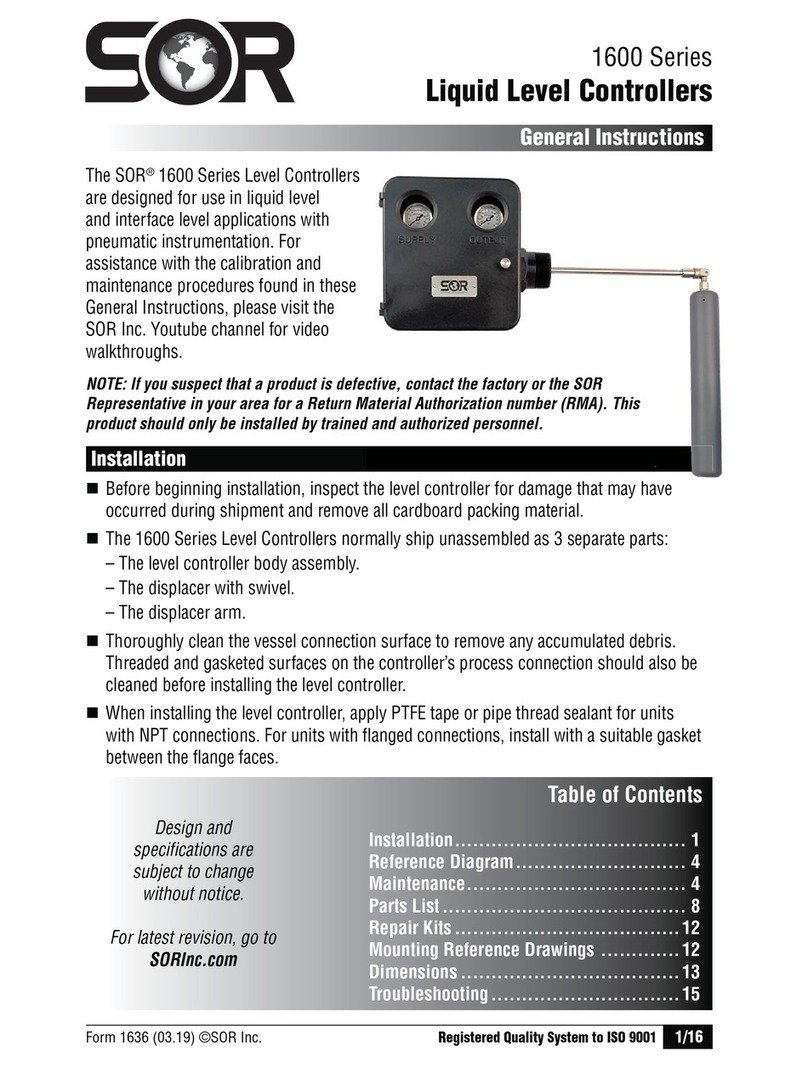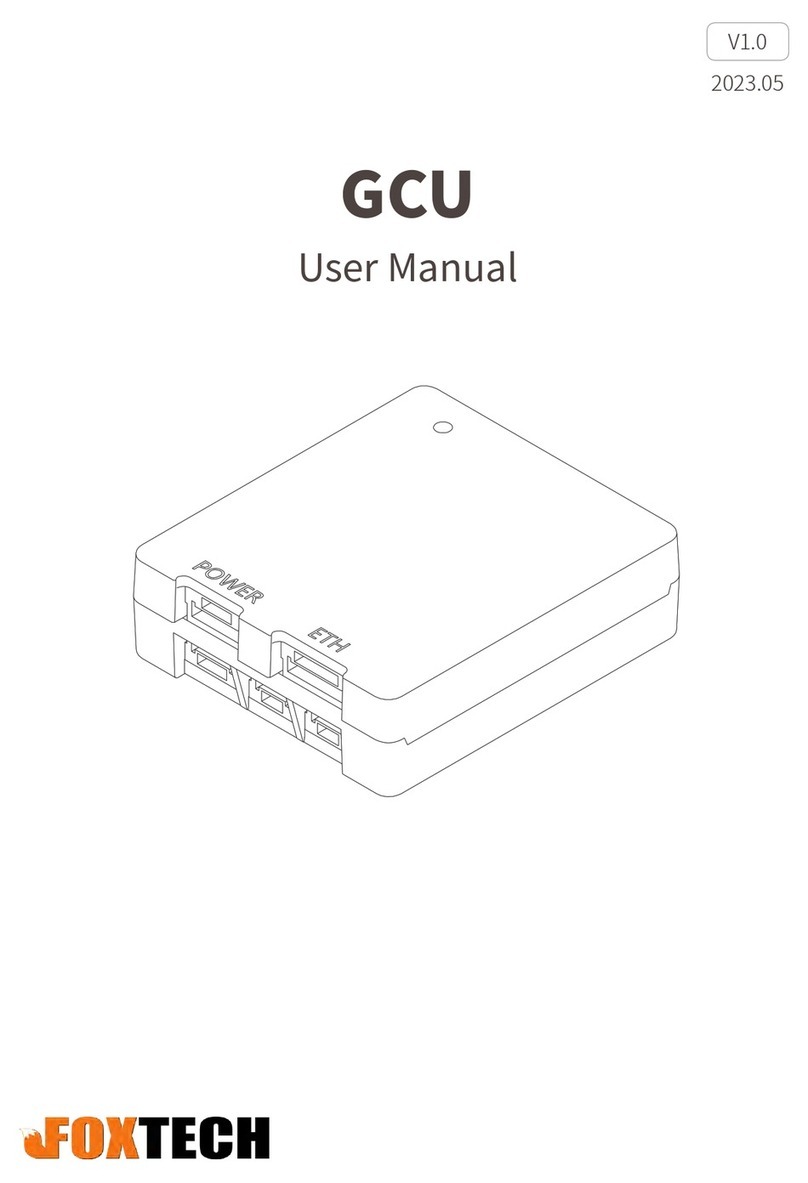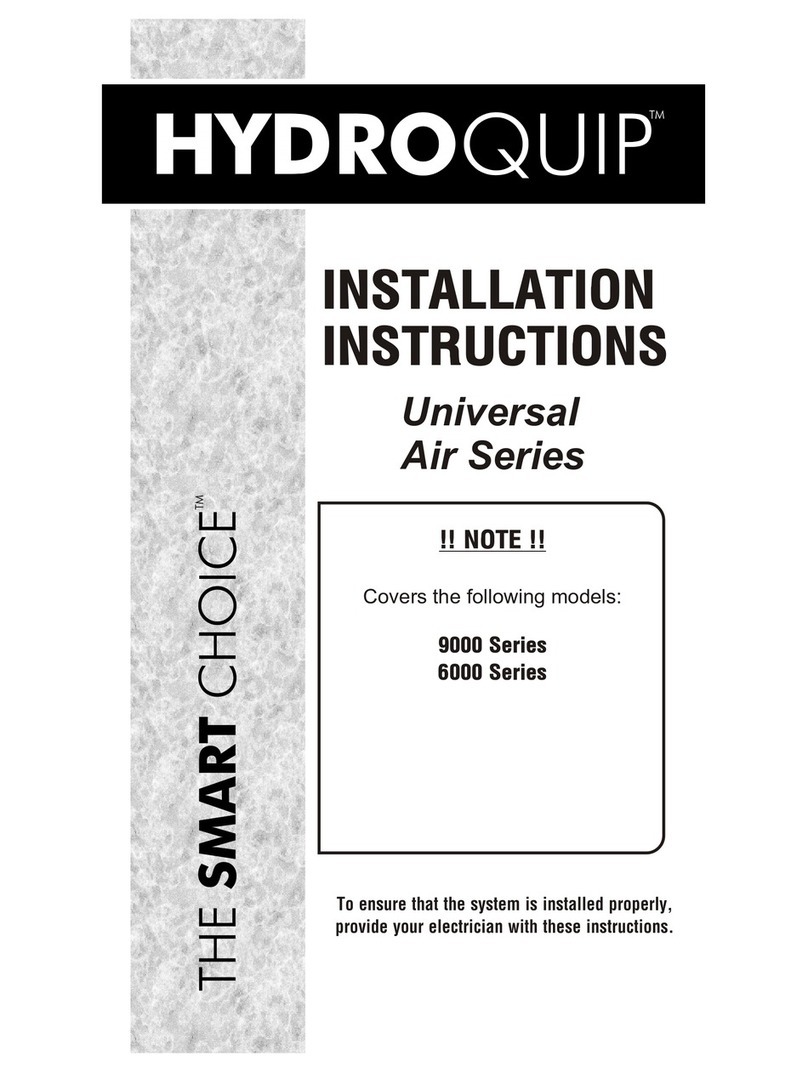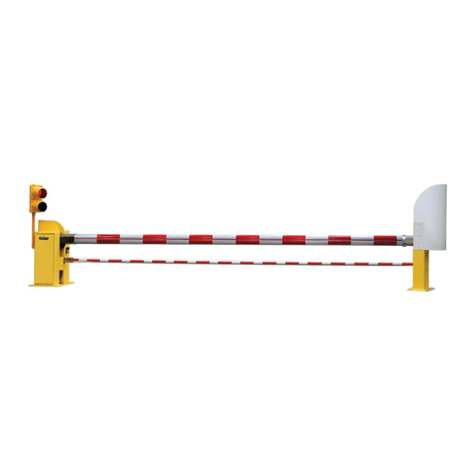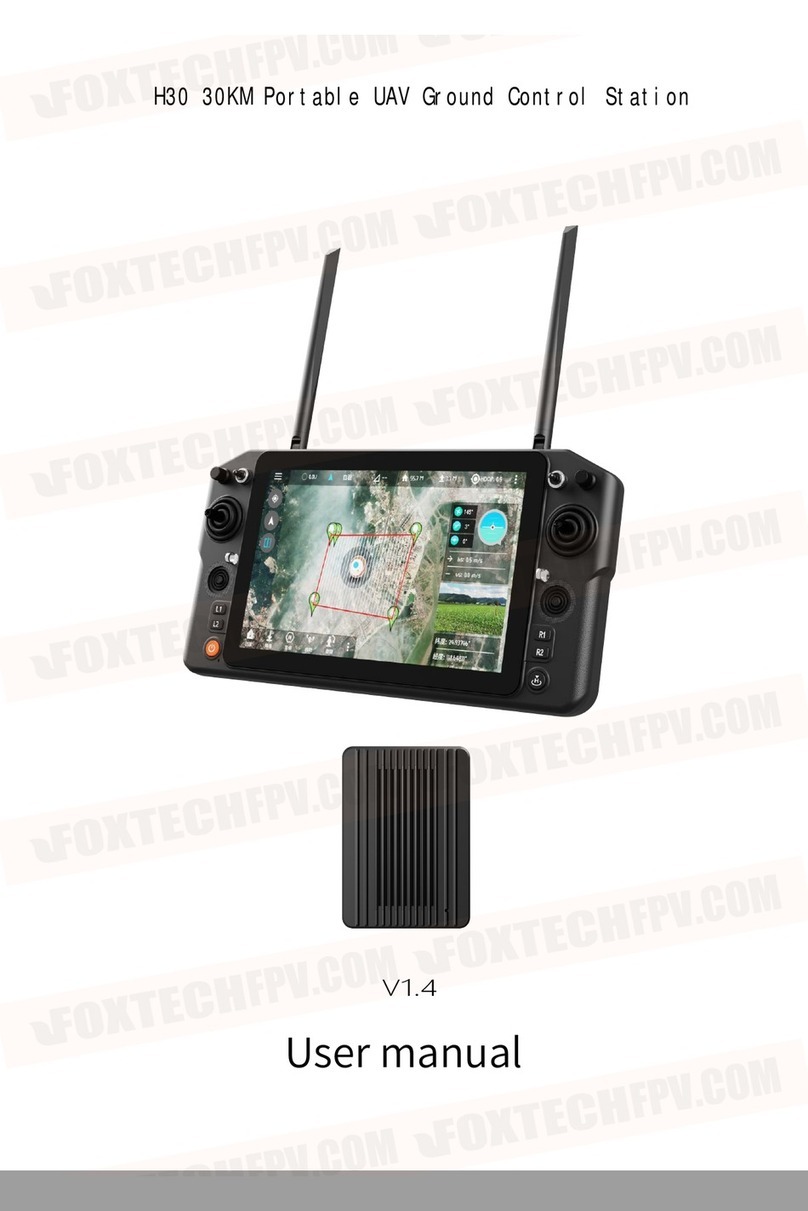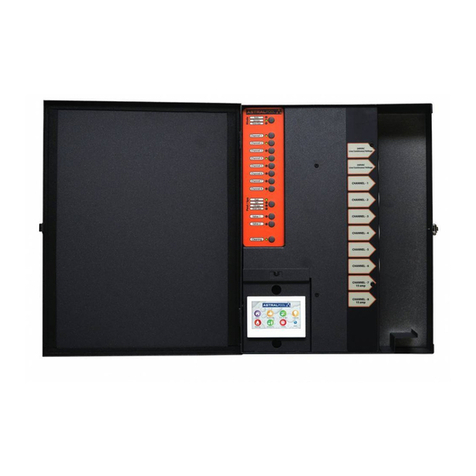SOR 681 Point Level Control Instruction manual

Form 924 (05.18) ©SOR Inc
.
1/16
The 681 Point Level Control utilizes DPDT relays to provide switching
for peripheral devices (such as pumps) in level applications. A sensor
attached to the control acts as an antenna to transmit the process
material level to the electronics.
The failsafe switch allows the user to determine the relay state when
the process contacts the probe.
The 681 Point Level Control can be mounted with the sensor in the
process (integral units K housing), or up to 150’ (45m) from the
sensor in the remote configuration (R housing).
The 681 Point Level Control constantly monitors sensor integrity. In the
unlikely event of a sensor failure, a secondary relay provides alarm switching.
An optional adjustable differential circuit (AD accessory) allows the user
to select on and off level points for the control. (All adjustments will be
present, but only those corresponding to the accessory in the model
number will function.)
RF Point Level Control
with Sensor Monitor
General Instructions
Registered Quality System to ISO 9001
Design and
specifications are
subject to change
without notice.
For latest revision, go to
www.sorinc.com
NOTE: If you suspect that a product is defective, contact the factory or the
SOR
®
Representative in your area for a return authorization number (RMA).
This product should only be installed by trained and competent personnel.
Table of Contents
Specications ...................................2
Pre-Installation Test............................3
Installation.......................................4
Remote Cable Connection.....................5
Electrical Connection........................ 6-7
SOR RF Probe Grounding Scheme ...........7
Set Point and Sensor Monitor Calibration ..8
Adjustable Differential Calibration...........9
Sensor Replacement ......................... 10
Troubleshooting ............................... 10
Circuit Board Replacement.................. 11
Varistor Replacement ........................ 11
Fuse Replacement............................ 12
Dimensions ................................ 13-16
i
ng
.
.

2/16
Form 924 (05.18) ©SOR Inc
.
Specications
Ambient temperature limits ..............................................................................-40 to 160
o
F/
-40 to 71
o
C
Enclosure
Weatherproof.............................................................................................NEMA 4, 4X, IP65
Explosion proof.....................................................................................Class I, Group C & D;
Class II, Group E, F, & G;
Class III; Divisons 1 & 2
Supply voltage ..................................................................................................... See page 8
DPDT relay contact rating .........................................................................10 Amps 250 VAC
10 Amp 30 VDC (resistive)
Remote distance from sensor ............................................................................... 150’/45m
Adjustment range
Range I ...........................................................................................0 - 300pf, .5pF sensitivity
Range II .....................................................................................300 - 1000pf, 1pF sensitivity
Set point stability
Range I .............................................................................................0.075 pF/
o
F (0.13 pF/
o
C)
Range II ..............................................................................................0.15 pF/
o
F (0.27 pF/
o
C)
Zero rangeablility ......................................................................................................1000pF
Repeatability ................................................................................................................ 0.5%
Adjustable differential range ................................................................................ 0 - 1000pF
Response time .................................................................................................. <100 msec
Power at sensor ............................................................................................... <10 μ joules
Electrostatic discharge (ESD) protection
IEC 1000-4-2 compatible
Electrical conduit connection .............................................................................3/4” NPT(F)

Form 924 (05.18) ©SOR Inc
.
3/16
Pre-Installation Test
Remove instrument from shipping box and visually inspect for obvious physical dam-
age. Report any shipping damage to the carrier. Report any internal discrepancies to
the factory representative in your area. Record the serial number from the nameplate
should conversation with the factory be necessary.
Remove housing cover.
Place instrument on an insulated surface or support so sensor does not touch a
conductive surface.
Ensure area is safe and observe normal precautions for exposed and powered
electronic components.
Apply appropriate power to terminals of Line Power Terminal Block. (See page 6.)
Move failsafe select switch to LO position and observe green LVL LED. (See ).
Turn the Level adjustment clockwise (25 turns) to decrease the set point until the
green LVL LED turns on.
NOTE: Do not turn the Level adjustment past 25 turns! Damage to the unit could result.
Turn the LEVEL adjustment counterclockwise until the green LED turns off.
Slowly move a hand toward the probe to touch it. The green LED will be on when the
probe is touched. If not, turn the LEVEL adjustment clockwise less than one turn. The
green LED should be on when the probe is touched.
When practical, use a small container of actual process material to calibrate the con-
trol. If the actual process vessel is metal, use a metal container (coffee can, etc.) and
ground it to the instrument housing. If the actual process vessel is an insulator, such
as fiberglass, use a plastic container.
Immerse the sensor in the process material; the LED should light. If not, it may be
necessary to turn the level adjustments.
To detect an interface, such as oil/water or foam/liquid, the lighter material must be
on the sensor, then tuned out. Then move the LEVEL adjustment to detect the heavier
process material. (See and ).
Oil
Water

4/16
Form 924 (05.18) ©SOR Inc
.
Conduit must be installed between the sensor base and the electronics housing to provide
a raceway for sensor extension cables. (See ).
If the sensor is a solid rod it may be cut or bent for clearance or placement. Use a 3-inch radius
should a bend be required. It is permissible to increase the sensor length by welding a length of
identical rod to the supplied sensor. Re-calibration is required if the probe length is changed.
Installation
Standard Conguration is a 3/4” NPT(M) pipe nipple that threads into a 3/4” NPT(F) vessel
nozzle or half coupling. Allow a 4-inch turn radius. (See and
). Open tanks, vats,
sumps or basins may require a locally-made bracket mount similar to that shown in
.
Optional Conguration is a raised face or flat face ANSI flange. See Form 1100 for selection.
(See and
).
Orientation The control can be mounted in any position. Placement and orientation of the
sensor in a vessel is usually determined by available nozzles. The sensor should be away
from fill points to avoid false trips. The insulator bushing on the sensor should protrude
a minimum of 1” from the inner wall of the vessel. The sensor must not touch any metal,
nor should conductive process build-up be allowed to bridge between the sensor and a
grounded metal tank wall.
This product must be installed with an explosion proof breather vent
per Agency requirements and the National Electrical Code-Article 501,
Section F, paragraph 3.

Form 924 (05.18) ©SOR Inc
.
5/16
Remote Cable Connection
Electical power must be disconnected from explosion proof models before
the cover is removed. Failure to do so could result in severe personal injury
or substantial property damage.
Ensure that wiring conforms to all applicable local and national electrical codes and install
unit(s) according to relevant national and local safety codes.
Fishing the Sensor Extension Cables
One three-conductor extension cable is required. Pull cable from the sensor base so that
the free ends follow the fish through the conduit. (See ).
Connections Inside Sensor Base
Inside the sensor base, a remote circuit
board rests in a plastic holder. Attach the
cable wires to the terminal block on the
circuit board as follows:
Connections Inside Electronics Housing
Inside the electronics housing, unscrew the bracket holding the circuit board in place. Pull
the board out of the holder. At the bottom of the circuit board, there is a connector labeled
“+ - probe”. Attach the cable wires to the terminal block as shown above.
Conduit must be installed between the sensor base and the electronics housing to provide a
raceway for sensor extension cables. (See ).
Terminal Block Cable
+ red wire
- black wire
PROBE white wire
Control Board
Terminal Block
Remote Board
Terminal Block
Conduit must meet Class I Group C & D;
Class ll Groups E, F & G; Division 1 & 2
Electronics Housing
Remote Sensor Board
Probe Connector
Sensor Base
Control Board

6/16
Form 924 (05.18) ©SOR Inc
.
Electrical Connection
Level and Alarm (See ). DPDT relays: 10 amp 250 VAC; 10 amp 30 VDC (resistive)
Connect external circuit wires as required to screw clamp terminals marked:
C1 (Common) C2 (Common)
NO1 (Normally Open) NO2 (Normally Open)
NC1 (Normally Closed) NC2 (Normally Closed)
Line Power Voltage Limits Max. Current Draw Board Marking
(See ). 12 ± 10% VDC 100 mA + –
24 ± 10% VDC 100 mA + –
120 (95-130) VAC 25 mA L1, N (shown)
240 (195-250) VAC 13 mA L1, L2
Ensure that wiring conforms to all applicable local and national electrical codes and install
unit(s) according to relevant national and local safety codes.
Electrical power must be disconnected from explosion proof models before
the cover is removed. Failure to do so could result in severe personal injury
or substatnial property damage.
1. Remove housing cover.
2. Observe applicable electrical codes and recognized wiring practices.
3. Remove two mounting screws and slide out PC board to expose green
ground screw (Internal Primary Equipment Ground/Earth) in base of housing.
4. Connect green line ground wire to green ground screw on base of housing.
(Ground wire should be a minimum of 18-AWG.)
5. Reposition PC board, replace and tighten mounting screws. Ensure that
banana plug on sensor lead wire is secure in sensor jack.
6.
Connect hot line power wire (typically black) to L1 position on the terminal block.
7. Connect neutral line power wire (typically white) to N position on the
terminal block.
8. Replace cover.
9. Apply power as desired.
1. Perform Steps 1 through 6 above.
2. Connect second hot line power wire (typically red) to L2 position on the
terminal block.
3. Replace cover.
4. Apply power as desired.
1. Perform Steps 1 through 5 above if a case or equipment ground wire is
provided for connection to earth ground.
2. Connect positive line power wire to the terminal marked (+).
3. Connect negative line power wire to the terminal marked (–).
4. Replace cover.
5. Apply power as desired.
120 VAC
(681K7)
240 VAC
(681K8)
12 VDC
(681K5)
24 VDC
(681K6)

Form 924 (05.18) ©SOR Inc
.
7/16
SOR RF Probe Grounding Scheme
SOR RF Probe Grounding Scheme
Critical Grounding Path =
Circuit
Board
Line
Neutral
Ground
Electronics
Housing
Power Supply
Line
Neutral
Ground
Process
Connection
SOR Supplied
Stilling Well
(optional)
Probe Center
Conductive Element
IMPORTANT! Do not
provide separate earth
grounding for the process
connection. This can create
a parallel grounding circuit
that will impair operation
and calibration.
Green LVL LED Alarm Relay Terminal Blocks
Failsafe Switch
Level Relay Terminal Blocks
Line Power Terminal Block
Red LED
Yellow LED
Adjustable Differntial Adjustments
(Function only on units
with AD accessory)
Remote Probe Terminal Block
(Remote units only)
Do not provide separate earth grounding
for the process connection. This can
create a parallel grounding circuit
that will impair operation and calibration.

8/16
Form 924 (05.18) ©SOR Inc
.
Set Point and Sensor Monitor Calibration
The failsafe mode on either rising or falling level can be easily changed in the field. See
procedure and chart below.
NOTE: Upon loss of power, or some component failures, the output relay is de-energized and its
contacts return to the “shelf position” NC (Normally Closed) to signal an alarm condition
regardless of process level.
Sensor Monitor Calibration
Disconnect the probe wire from the circuit.
Turn the SENSOR MONITOR adjustment until the red Sensor Monitor LED just lights.
The circuit will close the normally open contacts on the ALARM relay.
Reconnect the probe wire to the circuit board. The circuit will return the ALARM relay
contacts to the normal state.
Set Point Calibration
Disconnect line power supply.
Remove the housing cover.
Rotate DIFFERENTIAL adjustment 25 turns clockwise, or until you hear the
potentiometer click.
Look at the chart below to determine the correct failsafe switch setting for your application.
Units in Hazardous Locations — Prior to calibration, make sure that the
work area is declassied before removing the explosion proof cover to
calibrate the unit. Failure to do so could result in severe personal injury or
substantial property damage.
Continuity Chart
Fail Safe
HI
Fail Safe
LO
NC1 C1 NO1 NO2 C2 NC2
NC1 C1 NO1 NO2 C2 NC2
NC1 C1 NO1 NO2 C2 NC2
NC1 C1 NO1 NO2 C2 NC2
Switch Position Process Level Terminal Continuity

Form 924 (05.18) ©SOR Inc
.
9/16
Perform set point calibration per instructions.
Locate the DIFFERENTIAL adjustment (See ), and rotate the screw head fully
counterclockwise. Stop when you hear a small click.
Move the process level to the point where the adjustable differential will be set.
Turn the screw head of the DIFFERENTIAL adjustment clockwise until you see the
LEVEL LED change from on to off, or off to on. You will also hear a click as the relay
contacts change state.
Adjustable Differential Calibration (AD accessory)
FAILSAFE LO
Move the process to the level where switching is needed, and move the FAILSAFE
switch to LO.
If the green LVL LED is off, turn the LEVEL adjustment clockwise until the LED just lights.
If the green LED is on, turn the LEVEL adjustment counterclockwise until the LED turns
off. Then turn another 1/4 turn clockwise or until the LED just lights.
FAILSAFE HI
Move the process to the level where switching is needed and move the FAILSAFE
switch to HI.
If the green LED is on, turn the LEVEL adjustment clockwise until the LED just turns off.
If the green LED is off, turn the LEVEL adjustment counterclockwise until the LED
lights. Then turn another 1/4 turn clockwise or until the LED just turns off.

10/16
Form 924 (05.18) ©SOR Inc
.
Sensor Replacement
Disconnect power to the unit.
Remove the housing cover.
Remove two screws holding bracket to plastic holder.
Slide out PC board to expose the sensor connection.
Disconnect the sensor wire.
Unscrew the sensor from the housing.
Apply thread sealant to the male threads of the new sensor.
Thread the new sensor into the bottom of the housing.
Connect the sensor wire to the “probe” connection on the circuit board.
Slide the PC board into the grooves in the plastic ring inside the housing.
Replace the two screws in the circuit board
Reconnect power and replace the housing cover.
Replacement Sensors
See Form 1100 RF Catalog for replacement sensor model numbers
Troubleshooting
Symptom/Problem Possible Cause Corrective Action
No LEDS lit
1. Power supply turned off
2. Improperly wired line power
3. Broken power supply wire
4. Blown fuse
5. Blown varistor
1. Check power supply source
2. check terminal block wiring
3. Check wiring integrity
4. Replace fuse F1
5. Replace varistor VR1, VR2
or VR3
LVL LED remains lit
at all times
1. Probe wire touched housing or
other ground
2. Setpoint is at the lowest level
1. Check probe that probe wire is
properly attached to the probe
2. Turn the LEVEL adjustment
counterclockwise and retry
LVL LED operates
properly, but relay
does not respond
1. Relay contact damage
2. Burned or broken circuits
1. Replace circuit board or relay
2. Replace circuit board
Process material
is not detected
1. Sensitivity is improperly set
2. Highly conductive product
3. Heavy conductive build-up
on the sensor
4. Circuit failure
1. Recalibrate per page 6
instructions
2. Use sheathed sensor
3. Use sheathed sensor and
periodically remove the build-up
4. Replace circuit board
If corrective action is not effective, please consult the factory.
NOTE: Agency certied units, (FM, CSA, IEC) must be returned to SOR for repairs.

Form 924 (05.18) ©SOR Inc
.
11/16
Contact the factory for the correct replacement circuit board (Model number required).
Disconnect power to the unit.
Remove the housing cover.
Remove two screws holding bracket to plastic holder
Slide out PC board.
Disconnect power wiring, sensor wire, and the ground connection to the housing.
Connect the sensor lead from the new board to the probe. Connect ground to the
housing.
Slide the new board into the control housing.
Replace the two screws in the circuit board bracket to the plastic holder. These screw
are self-tapping. Do not over–tighten
Reconnect power and replace the housing cover.
Circuit Board Replacement
Disconnect power to the unit.
Remove the housing cover.
Unplug the varistor(s) (RV1, RV2, RV3) located on the opposite side of the circuit
board from the wiring terminals. (See
)
).
Plug in replacement varistor(s).
Replace the housing cover. Re-connect power to the unit.
Use the replacement varistor per the following chart:
Varistor Replacement
Control Model
Number
Varistor Part
Number Quantity Location
68152820-015 1 RV1
68162820-015 1 RV1
68172820-003 3 RV1, RV2, RV3
68182820-004 3 RV1, RV2, RV3

12/16
Form 924 (05.18) ©SOR Inc
.
Fuse Replacement (AC units only)
Use replacement fuse part number: 2806-001 1/2A
Disconnect power to the unit.
Remove the housing cover.
Unplug the fuse (F1) from the circuit board (See ). The fuse is located on the
opposite side of the circuit board from the wiring terminals.
Plug in replacement fuse.
Replace the housing cover.
Reconnect power to the unit.
Reverse Side of Printed Circuit Board
Relays
Transformer
Location
RV1
F1
(120VAC and
240VAC only)
RV2
RV3

Form 924 (05.18) ©SOR Inc
.
13/16
Dimensions
Dimensions are for reference only.
Contact the factory
for certified drawings
for a particular model number.
Linear = mm/inches
Drawing 0390654

14/16
Form 924 (05.18) ©SOR Inc
.
Dimensions
Dimensions are for
reference only.
Contact the factory
for certified drawings
for a particular
model number.
Linear = mm/inches
Drawing 0390653

Form 924 (05.18) ©SOR Inc
.
15/16
Dimensions
Linear = mm/inches
Drawing 0390653
Dimensions are for
reference only.
Contact the factory
for certified drawings
for a particular
model number.

16/16
Form 924 (05.18) ©SOR Inc
.
14685 West 105th Street, Lenexa, KS 66215
913-888-2630
800-676-6794 USA
Fax 913-888-0767
Registered Quality System to ISO 9001
Printed in USA www.sorinc.com
Table of contents
Other SOR Control System manuals
Popular Control System manuals by other brands

Mill-right
Mill-right CARVE KING 2 Assembly instructions
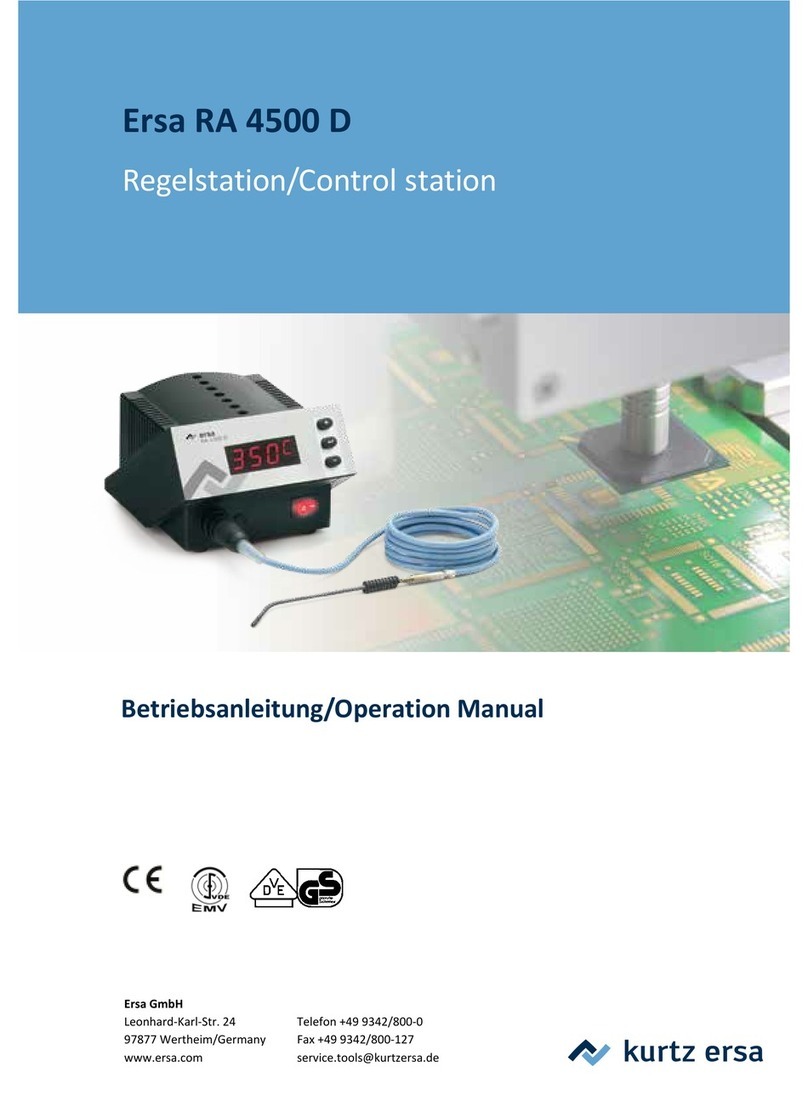
ersa
ersa RA 4500 D Operation manual
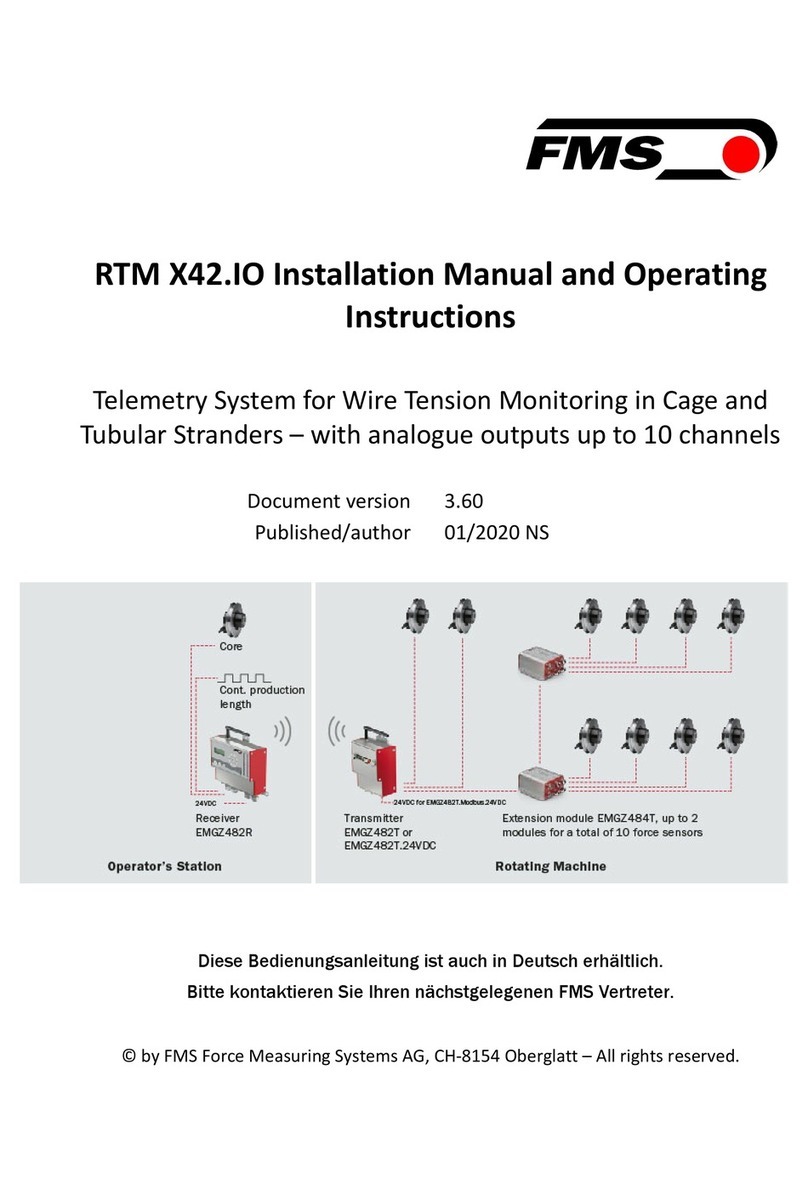
FMS
FMS RTM X42.IO Installation manual and operating instructions
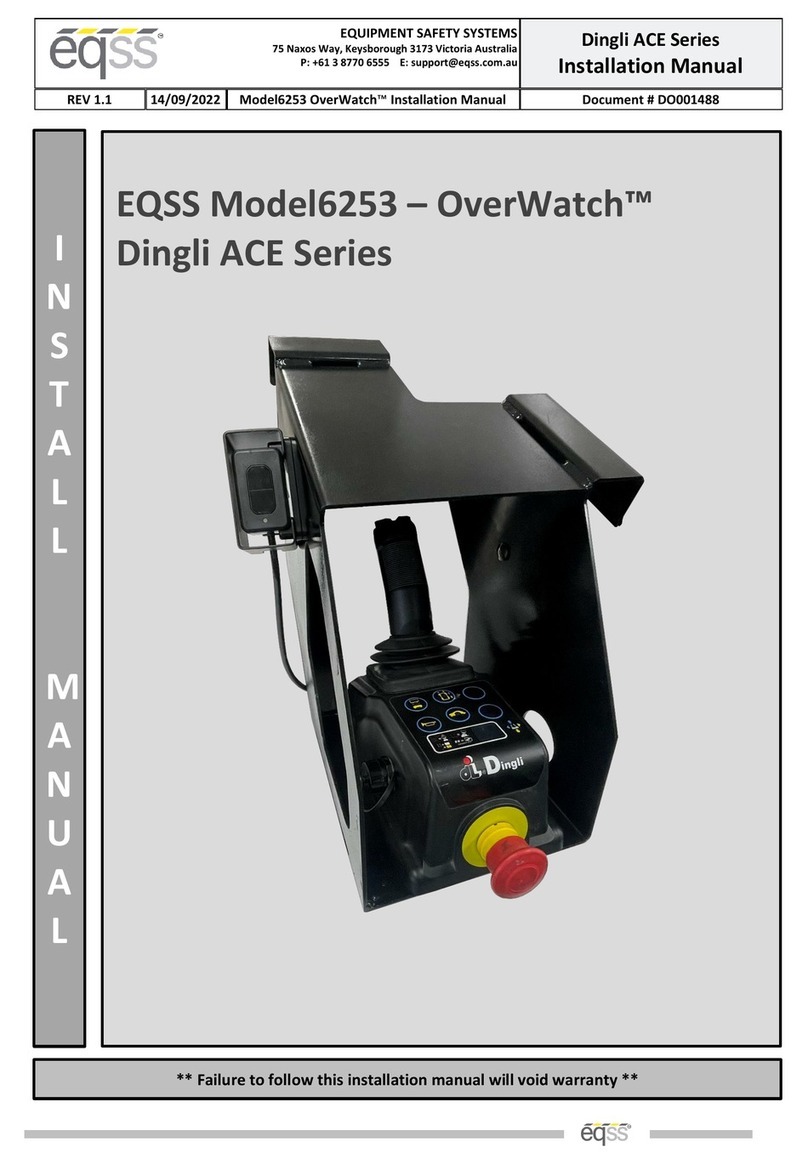
eqss
eqss OverWatch Dingli ACE Series installation manual
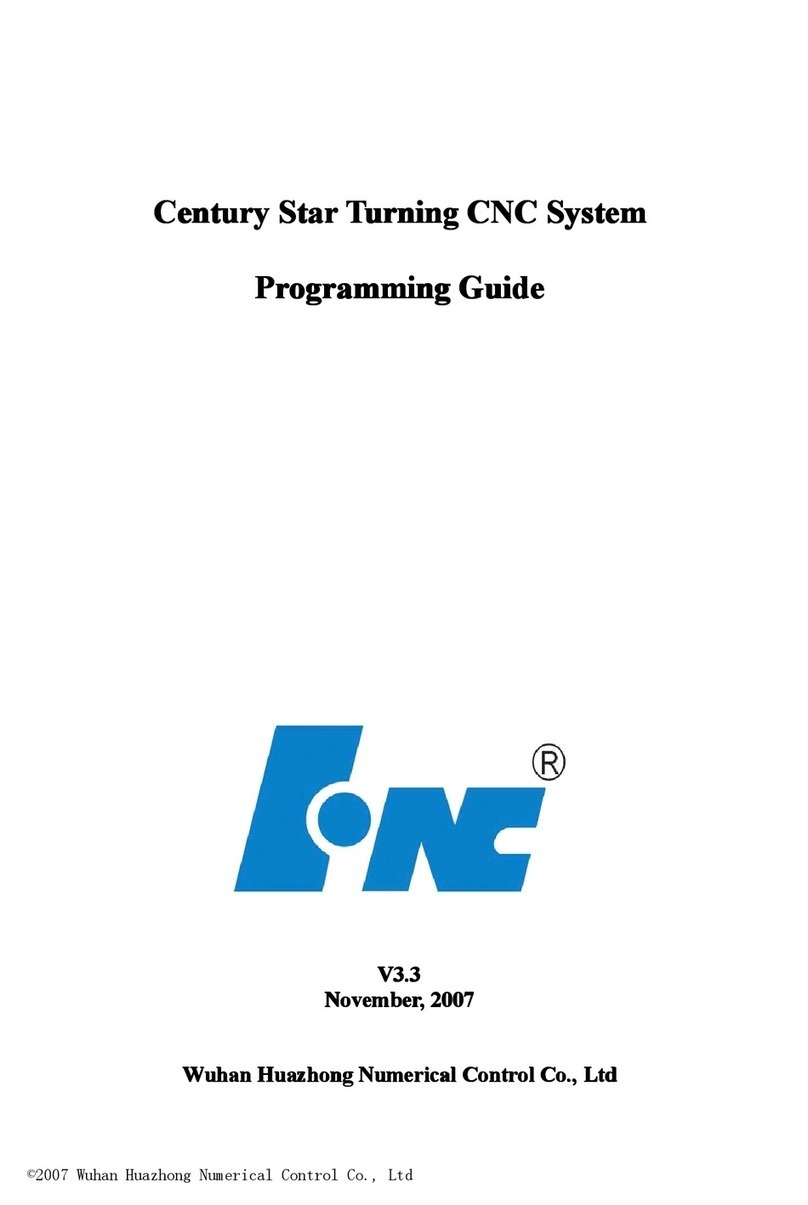
Wuhan Huazhong Numerical Control Co., Ltd
Wuhan Huazhong Numerical Control Co., Ltd HNC-18iT v4.0 Programming guide
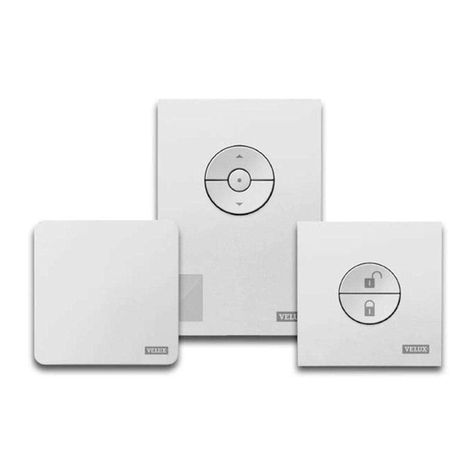
Velux
Velux ACTIVE KIX 300 installation instructions
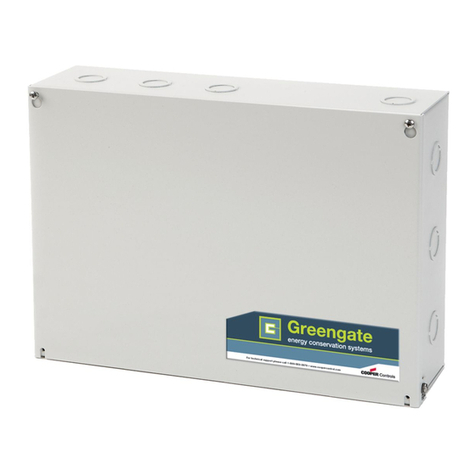
Eaton
Eaton Greengate ControlKeeper 4 installation instructions
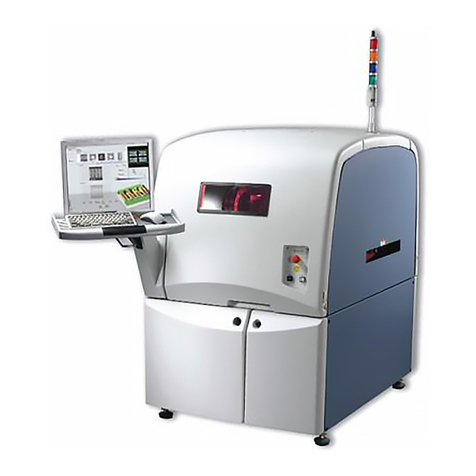
Orbotech
Orbotech Symbion S36 Programmer's guide
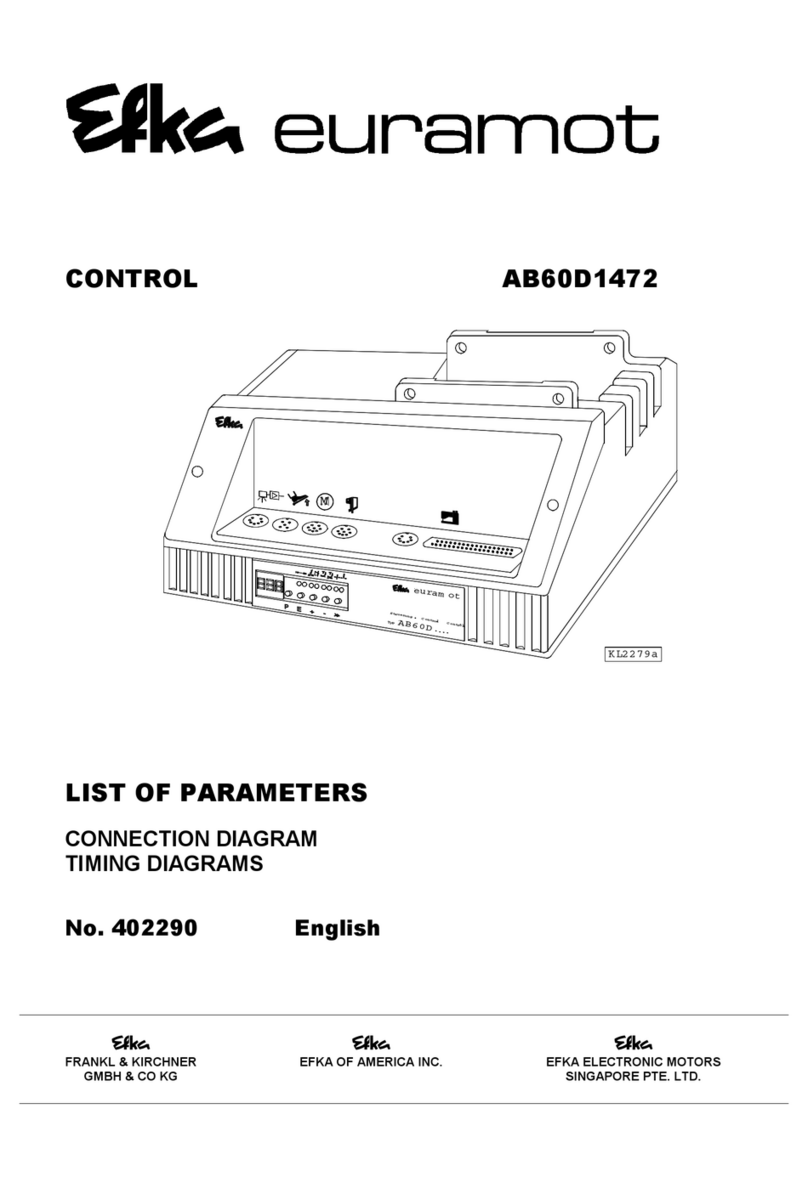
Efka
Efka euramot AB60D1472 manual
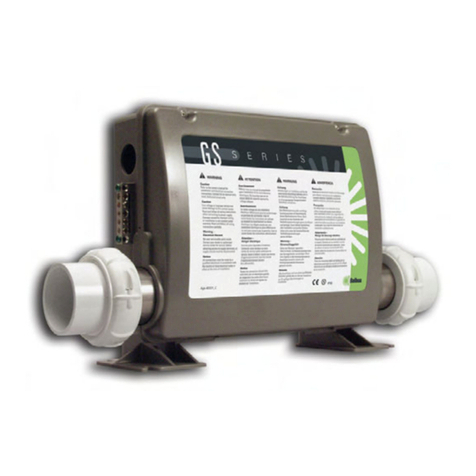
Balboa Instruments
Balboa Instruments GS520DZ manual
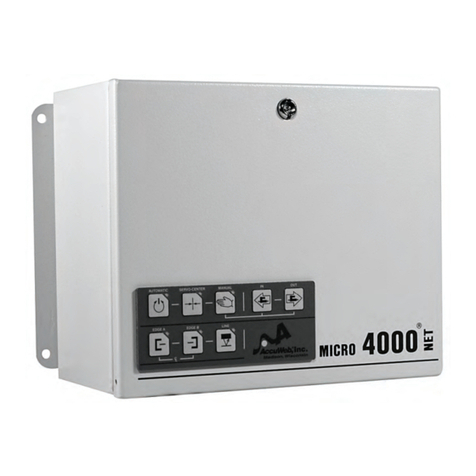
AccuWeb
AccuWeb MICRO 4000 NET instruction manual

Allen-Bradley
Allen-Bradley ControlLogix 1756-CMS1B1 user manual
